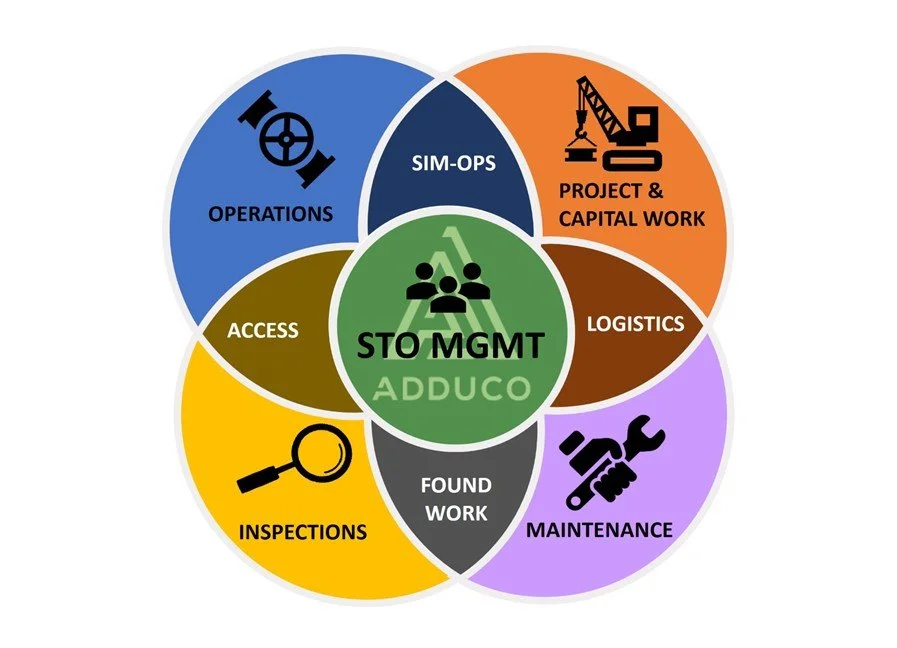Managing the Beast: Turnaround Complexities that a Schedule Can’t Fix
Most people think turnaround failures happen during execution—when a contractor falls behind, when a critical path activity slips, or when an unexpected inspection finding disrupts the schedule.
But after three decades in the operations leadership world, I've learned a very different truth: Turnarounds not only fail in the field. They can start to fail months or even years before the first wrench turns, when leadership alignment is missing or incomplete. It took a few hard lessons early in my career to understand how vital leadership engagement truly is.
When I Thought Great Planning Was Enough
Early on, I believed that meticulous planning and scheduling would protect me. If we had the correct logic, the right resource curves, and the proper shutdown sequence, everything would fall into place.
I learned quickly that this wasn't true.
One of my first major wake-up calls happened during a turnaround in Alberta. We were cruising along, thinking we had the scope under control, when we opened up a converter bed and found damage that required extensive redesign and repair. The work itself wasn't the problem; engineering could handle it. The real trouble was that I was the Plant Foreman and wasn't aware of how important it was to involve senior leadership early enough to prepare them for a scenario like this.
Suddenly, we were scrambling—not because the technical scope was overwhelming, but because the organization wasn't aligned. Leadership hadn't been part of the conversation soon enough, so when the bad news arrived, we faced delays, confusion, and unnecessary stress.
Another time, I was a Superintendent for a plant startup in British Columbia. Our team was laser-focused on getting the plant online safely and efficiently. But in our rush to commission and start up, we completely overlooked the business implications of a new production allocation system, which accounting needed to set up. It seems like a background administrative task—until it wasn't. Months of billing delays followed, creating frustration for both the company and customers, who were producing in the plant. Again, the problem wasn't technical. The problem was alignment.
These early experiences taught me that turnarounds and startups aren't just mechanical events—they are organizational events. And organizations succeed only when leaders are aligned, informed, and engaged.
Turnarounds: The Ultimate Organizational Stress Test
Few activities combine risk, cost, time pressure, and complexity the way a turnaround does. They demand that dozens of moving parts operate in tight coordination, often under circumstances where the margin for error is small.
What makes turnarounds truly unique is that they force multiple organizational groups: operations, maintenance, inspection, engineering, and sometimes capital projects to act as one integrated team. Unfortunately, in most organizations, these groups don't report to the same person and don't share the same priorities. And the turnaround manager has to lead through influence rather than authority.
When leadership alignment is missing, these groups work hard—but not always together. Decisions come too slowly, priorities clash, and the weight of the event falls on the shoulders of a few individuals who are forced to absorb risks the organization hasn't fully acknowledged.
This is why senior leadership engagement isn't a courtesy—it's a necessity.
A Leadership Perspective of Complex Projects
As I moved into senior roles—and later into consulting—the contrast became crystal clear. When leadership is aligned, aware, and involved, the tone of a turnaround changes completely.
One of the best examples was a major turnaround at an aging sour-gas plant in Alberta; this high-risk facility required thoughtful preparation. This time, we did something different: we brought the senior leadership team into the process 18 months before execution. We built a steering committee that genuinely acted as a steering committee, not an update check-in, but a team that understood the complexities, the risks, and the challenges. Then COVID hit.
Under any other circumstances, COVID would have derailed the entire event, but because the leaders were aligned early, the organization responded with coordination and quick decisions were made. The Leadership team met challenges by knowing its role, understanding the stakes, and trusting the HSE department to deliver. Despite the chaos around us, the turnaround landed on time and on budget. It wasn't because it was an easy event. It was because everyone from frontline trades to executive leadership was working from the same playbook.
I saw the same effect during a new plant startup where engineering, construction, and operations made a deliberate commitment to work together as a team. Problems didn't disappear; they never do, but they were solved methodically and collaboratively. Interestingly, a noticeable disruption occurred when a few members joined late in the project and struggled to integrate. It took some coaching for these employees to align with the team culture and expectations.
Seeing this transformation reinforced what my early career had tried to teach me: Leadership alignment isn't a "nice to have." It is the structural backbone of successful turnarounds.
Why Leadership Must Understand the Complexity
Senior leaders are often responsible for results from turnarounds without necessarily having lived inside one. Without a clear understanding of how unpredictable and interconnected these events are, leaders may assume that traditional project-management thinking applies. However, turnarounds aren't traditional projects. They are living systems. They evolve as inspections reveal the real condition of equipment. They shift as new risks emerge. They rely on quick decisions, seamless communication, and shared purpose.
When leaders fully understand that complexity, they empower the organization to succeed. When they don't, the organization pays for it later.
Turnaround Complexity Diagram
Governance: The Silent Force Behind High-Performance Turnarounds
If alignment is the heart of a turnaround, governance is the nervous system. It connects vision to execution and ensures that decisions flow the right way, at the right time, with the correct information.
I've seen turnarounds with strong technical teams still struggle simply because governance was unclear—nobody was sure who owned a decision, how to escalate an issue, or which version of the plan was the real one.
On the other hand, when governance is structured early and supported by all leaders, the turnaround runs with clarity and confidence. Decisions happen faster. Risks are surfaced earlier. Everyone knows what success looks like. And that clarity begins long before planning does.
The Project Charter: The Alignment Tool that Sets Projects up for Success
One of the most powerful tools in a turnaround is the Project Charter or Premise document. At its best, it acts as a contract between the organization and the event. It defines the goals, priorities, decision-makers, and rules of engagement. Most importantly, it forces early conversations that prevent late surprises—the exact kind that caught me off guard early in my career.
When leaders are aligned on the charter, the entire organization moves more cohesively. It becomes the anchor that keeps expectations, resources, and strategy from drifting during the planning process.
STO Premise (Charter) Document
The Steering Committee: Where Leadership Truly Shows Up
The most successful projects I've been involved in all had one thing in common: a steering committee that treated the turnaround as a strategic business priority, not an operational inconvenience.
The Real Lesson: Leaders Don't Just Support Turnarounds—They Shape Them
Looking back, the difference between my early setbacks and my later successes wasn't the technical work. It wasn't even the planning.
It was alignment. Alignment gives people clarity. It gives teams trust. It gives turnaround managers the authority they don't always get on the org chart. And it provides the organization with the confidence to solve problems quickly and decisively.
Turnarounds will always be complex. They will always involve surprises. They will always test the organization's leadership capacity. But when leaders engage early, deliberately, and collaboratively, those surprises don't become crises—they become moments where the team proves its strength. In the end, that is what separates a turnaround that merely gets done from one that elevates the entire organization.
Ron Bettin, MBA, CMC is a Canadian executive and public speaker with more than 25 years of leadership and entrepreneurial experience. He co-founded several companies and provides management consulting through Adduco Inc. to large and small corporations. Ron strongly understands the importance of building value and creating success. He is a Southern Alberta Institute of Technology graduate with an MBA from Queen's School of Business.



